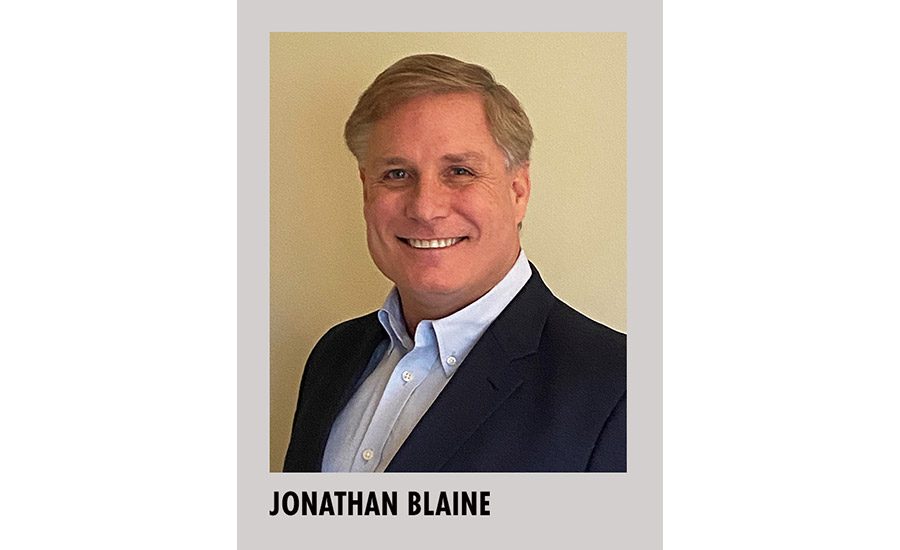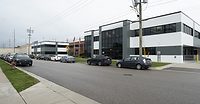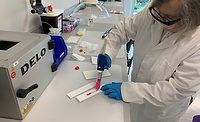Adhesives Manufacturer Building a Foundation of Sustainability
H.B. Fuller’s Global Environmental Compliance and Sustainability Leader Jonathan Blaine outlines the company’s approach to sustainability.

Jonathan Blaine, Global Environmental Compliance and Sustainability Leader, H.B. Fuller.

Jonathan Blaine, Global Environmental Compliance and Sustainability Leader, H.B. Fuller.


H.B. Fuller is working to build a solid foundation of sustainability. In the company’s latest sustainability report, it outlines the progress H.B. Fuller has made toward its sustainability targets for 2025. These targets include reduction of energy and greenhouse gas (GHG) emissions intensity by 20% and waste and water intensity by 10% by 2025, compared to a base year of 2014. Beginning in 2021, they embarked on an advanced stage with the creation of a new sustainability technical subcommittee comprised of a multidisciplinary team of experts on various areas of intervention directly related to environment, social and governance (ESG) matters. This subcommittee focuses on continuous improvement, integration, and transparency across the enterprise, serving as a lever to develop, monitor, and report on sustainability related KPIs and programs.
For the November issue, ASI reached out to H.B. Fuller to understand more about its commitment to sustainability. Jonathan Blaine, Global Environmental Compliance and Sustainability Leader, H.B. Fuller, was kind enough to answer our questions.
ASI: What do you see as the main drivers of sustainability initiatives within the chemical/adhesives and sealants industries?
Blaine: here are a variety of factors that influence corporate sustainability initiatives. Across our industry, we see the four main drivers of sustainability as: government commitments and legal mandates; consumer demand and public opinion; investor and supply chain expectations; and customer requirements for more circular, energy efficient, recyclable, bio-based, and non-toxic products. However, more broadly, we are seeing another larger driver emerge: the transition from sustainability to a broader, more holistic focus on environmental, social, and governance (ESG).
Historically, sustainability has been a bit more limited to simply “being green” or caring about the environment. Now, from the ESG perspective, one of the critical drivers is on managing within numerous legal and regulatory frameworks, making it even more complex. Looking at things just from the point of view of classic “sustainability,” most larger companies have adopted some form of targets and defined programs, while a few have signed on to international commitments. In large part, sustainability is still an evolving business demand, which many companies seem to still be learning to deal with, and largely in a reactionary way. Again, ESG makes that even more complex.
At H.B. Fuller, our ESG commitment and focus is deeply embedded in our company strategy and values, customer commitment, and responsibility to our shareholders. Each of which require understanding of the external forces mentioned above. We also pay close attention to macroeconomic pressures, energy constraints, supply chain, and geopolitical risks to our business. All these factors have a profound effect on our business operations and ESG focus.
ASI: What are the major concerns you hear from customers and investors in regard to sustainability?
Blaine: Customers and investors expect transparency around sustainability. They are most interested in information pertaining to climate change and socioeconomic factors, including labor, human rights, and diversity, with answers to questions related to governance, ethics, environmental impacts included. Customers and investors are increasingly using these factors in how they evaluate and qualify suppliers, as well as where they choose to invest, to ensure they partner with companies that are aligned with their ESG goals. From a commercial and product development perspective, we find that our own customers are focused on delivering greener, safer, and more durable products that address market needs, use renewable sources, and have a sustainability benefit evidenced by a proper life cycle assessment analysis (LCA).
ASI: What challenges have you faced when measuring your sustainability initiatives and results?
Blaine: A major role of H.B. Fuller Corporate Environmental Health Safety Security and Sustainability team at H.B. Fuller is to collect, track and report key sustainability performance data fully and accurately for improved decision-making. This includes managing a regular cadence of reporting from our 70-plus production plants and other sites across the globe, including warehouses and offices, on energy consumption, GHG emissions, and water and waste usage—our primary annual targets established in 2014.
One of the challenges we face is related to the data we receive from our manufacturing plants via our internal reporting system. Accurate data is the foundation for any sustainability program. We are in the process of improving the quality of our data, and the process we use to collect it, by implementing a new digital solution across our organization, which will support and strengthen the achievement of our targets, compliance with legal requirements, and responses to customers and independent rating organizations.
Another challenge, which we see as more of an opportunity, is in identifying tangible improvements at the facility level which will positively impact our sustainability results. With a global facilities network, identifying and implementing projects that will allow us to achieve our goals, enhance internal synergies, and drive wide implementation of good practices, is critical to continue delivering on our sustainability commitments. It likewise helps form the basis for new targets.
Also, the need to articulate a clear scope of what is considered sustainable, how to define it, and the ability to accurately measure the results are an important topic for the industry. For instance, something less sustainable at the raw material level may go on to enable a more sustainable, efficient system at the end of the value chain—understanding how much of a technology facilitates this bigger picture of sustainability is critical, yet very challenging as products expand into multiple applications, customers, and markets.
ASI: How does your company see its role in responding to concerns about global warming, and has that role shifted in the last 20 years?
Blaine: The world around us is changing rapidly, so companies, like ours, must be good stewards of the planet’s finite resources. We strive to reduce our footprint on the environment by operating our business with a focus on quality, environmental stewardship, and sustainability; meeting our environmental targets; operating in accordance with the regulations in the global communities we do business; and measuring and reporting our progress using globally respected frameworks.
Over the last 20 years, much has been studied and learned about global warming. As more and more information and data become available on climate change, we are increasingly using these findings to create solutions to help our customers minimize their impact as well as in our own business planning. Currently, we are in the process of performing a detailed climate risk assessment of our operations. Our team also is evaluating options for the use of more renewable energy, reforestation and carbon sequestration initiatives, where such projects make sense at our sites around the world. And we are continuing to do our part by being fully committed to the 10-year sustainability targets we established in 2014 and are currently evaluating new targets to put in place for 2025 and beyond, which we expect to include continued and increased investments in bio-materials, using less energy and water, and producing less waste.
Learn more about H.B. Fuller at www.hbfuller.com.
Jonathan Blaine, Global Environmental Compliance and Sustainability Leader, H.B. Fuller.
Looking for a reprint of this article?
From high-res PDFs to custom plaques, order your copy today!











